Top 10 Richest Temples in India
India, a land of diverse culture and different religious beliefs has witnessed the rise of temples which are not only the destinations to seek solace at the feet of God but retreat to the eyes of the believers.
Their sacred entities and their affluent architecture have earned them unparalleled fame. However, many temples had to undergo renovation with the help of the donations made by devotees.
The devotees have donated sacks of gold, silver and diamonds, which have later become the possessions of temple trusts. Here is a glimpse of the temples which earn in crores every year.
1.Padmanabhaswamy Temple, Kerala
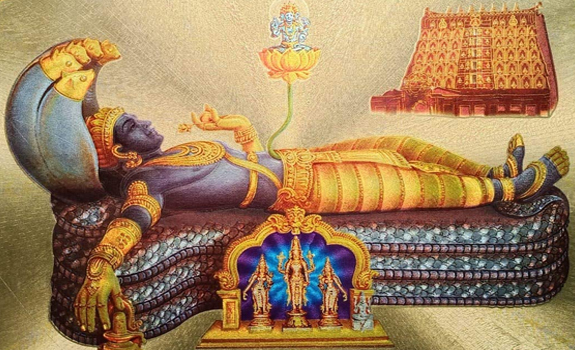
Padmanabhaswamy Temple is credited with the title 'The richest Temple in India' and in the world as well. This temple is situated in the heart of Thiruvananthapuram, Kerala and has created history with its vast and enormous wealth that was retrieved from this temple recently.
It is accepted that Parasurama blessed the symbol of Sree Padmanabha in Dwapara Yuga. Parasurama endowed 'Kshethra karyam' (Administration of the Temple) with seven Potti families â Koopakkara Potti, Vanchiyoor Athiyara Potti, Kollur Athiyara Potti, Muttavila Potti, Karuva Potti, Neythasseri Potti and Sreekaryathu Potti. Ruler Adithya Vikrama of Vanchi (Venad) was coordinated by Parasurama to do 'Paripalanam' (Protection) of the Temple. Parasurama gave the Tantram of the Temple to Tharananallur Namboothiripad. This legend is described in detail in 'Kerala Mahathmyam' which structures some portion of 'Brahmanda Puranam'.
This temple shot to fame on 7th July 2011, after the assests were discovered from 5 secret cellars of the temple where treasure worth more than Rs. 1,00,000 crore was found, that's around US$22.3 billion in total, without even calculating the antique value of the objects. With this Padmanabhaswamy Temple became the richest temple beating the likes of the Tirupati Balaji temple that was till now touted to be the richest.
Several extant Hindu Texts like the Brahma Purana, Matsya Purana, Varaha Purana, Skanda Purana, Padma Purana, Vayu Purana, Bhagavata Purana and the Mahabharata mention this shrine. The later works of Ninth Century poet-saints refer to the Temple and even the city as having walls of pure gold. At some places, both the Temple and the entire city are often eulogized even as being made of gold, and the 'Temple as Heaven'.
Interesting Fact:The treasure that was found
Antique gold ornaments:
-Sack full of Diamonds
-Golden idol of Mahavishnu worth Rs. 500 Crore
-Golden Crowns
-Golden Bow
-17 kg of gold coins(dating back to the East India Company period)
-Gold in shape of rice trinkets(Weighing one tone! )
-18 feet long golden necklace weighing 2.5 kg
-Thousands of pieces of antique jewellery studded with diamonds and emeralds
-Golden Vessels
2.Shirdi Saibaba Shrine, Mumbai
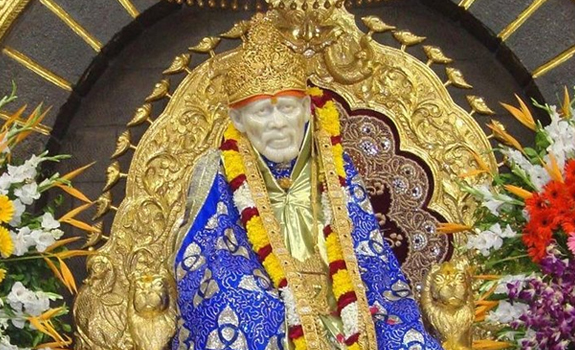
Sai Baba of Shirdi, also known as Shirdi Sai Baba, was an Indian spiritual master who was regarded by his devotees as a saint, fakir, and satguru, according to their individual beliefs.
He was revered by both his Hindu and Muslim devotees, and during, as well as after, his life it remained uncertain if he was a Hindu or a Muslim. This, however, was of no consequence to Sai Baba. He stressed the importance of surrender to the true Satguru or Murshid, who, having gone the path to divine consciousness.
Sai Baba is worshipped by people around the world. He had no love for perishable things and his sole concern was self-realization. He taught a moral code of love, forgiveness, Social activities, inner peace, and devotion to God and guru.
One of his well-known epigrams, "Sabka Malik Ek" ("One God governs all"), is associated with Hinduism, Islam.
According to the book Sai Satcharita, Sai Baba arrived at the village of Shirdi in the Ahmednagar District of Maharashtra, British India, when he was about 16 years old. He led an ascetic life, sitting motionless under a neem tree and meditating while sitting in an asana.
Numerous monuments and statues depicting Sai Baba, which serve a religious function, have been made. One of them, made of marble by a sculptor named Balaji Vasant Talim, is in the Samadhi Mandir in Shirdi where Sai Baba was buried.
The temple has gold and silver jewellery worth approximately Rs 32 crore and silver coins worth more than Rs 6 lakh. The temple gets donations worth Rs 200 crore every year.
3.Vaishno Devi Temple, Jammu
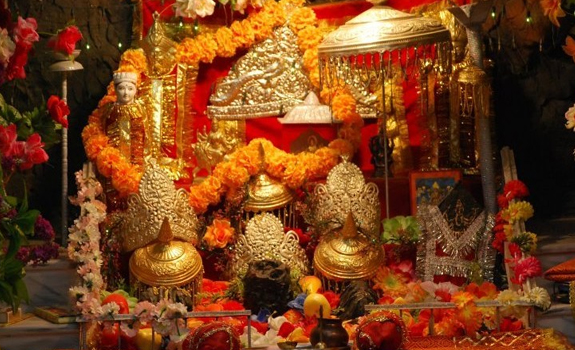
Vaishno Devi, also known as Mata Rani, Trikuta and Vaishnavi, is the incarnation of Goddess Mahalakshmi. The words "maa" and "mata" are commonly used in India for "mother", and thus are often used in connection with Vaishno Devi.
The Holy Cave of the Mother is situated at an altitude of 5200 ft.These Darshans are in the shape of three natural rock formations called the Pindies. There are no statues or idols inside the Cave.
Vaishno Devi Temple is a Hindu temple dedicated to the Hindu Goddess, located at the Trikuta Mountains within the Indian state of Jammu and Kashmir. More than 10 million pilgrims visit this shrine every year.
It is believed that at some point of time each one of these 33 koti (type) deities have worshipped Goddess Vaishno Mata, and left their symbolic marks inside.
The Annual income at Vaishno devi temple is 500 crores.
4.Siddhivinayak Temple, Mumbai
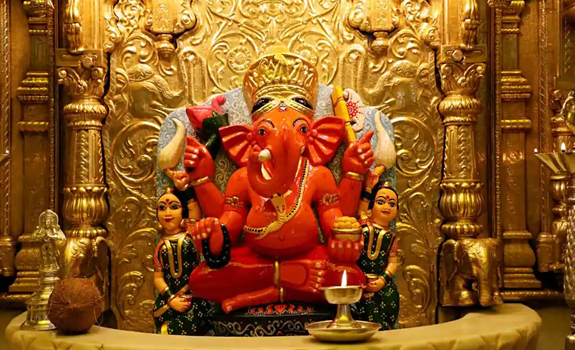
Shree Ganesh is the first to be worshipped before beginning any new venture as he is the destroyer of obstacles (Vighnaharta). This is Shree Siddhivinayak Ganapati Temple at Prabhadevi in Mumbai, a two-century-old Temple that fulfills the desires of the worshipers.
The city of Mumbai is a mute witness to places of worship & historical interest, which are not only popular but also of archaeological importance.
The most popular & significant places of worship are the Shree Siddhivinayak Ganapati Mandir situated at Prabhadevi. This temple was first consecrated on Thursday 19th November 1801, a fact that is noted in
government records.
The outstanding feature of this deity is the tilt of the trunk to the right side. The idol has four hands (Chaturbhuj), which contains a lotus in upper right, a small axe in upper left, holy beads in the lower right and a bowl full of Modaks (a delicacy which is a perennial favorite with Shree Siddhivinayak).
Flanking the deity on both sides are Riddhi & Siddhi, goddesses signifying sanctity, fulfillment, prosperity and riches. The forehead of the deity there is an eye, which resembles the third eye of Lord Shiva. The temple gets the donation around 100 crores per Annum.
5.Golden Temple, Amritsar
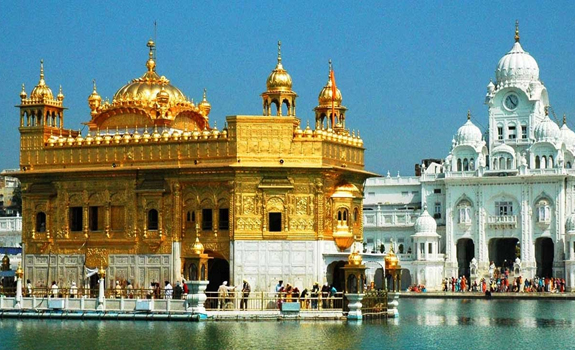
The most famous religious centre of the Sikh Community, Golden Temple attracts globetrotters for its arresting golden colour and exclusive architectural beauty. This charismatic golden shrine is adorned with golden and silver detailing and looks imposing at night for its strikingly illuminated golden dome.
A blend of Indo-Islamic and Indo-European touch lends the temple a divine aura.
The canopy of the temple is made of gold. The holy book Guru Granth Sahib is kept is studded with precious diamonds and bright stones. It is estimated that on an average around 40,000 visitors throng here in Golden Temple every day.
The construction of Harmandir Sahib was intended to build a place of worship for men and women from all walks of life and all religions to come and worship God equally.
The present-day gurdwara was rebuilt in 1764 by Jassa Singh Ahluwalia with the help of other Sikh Misls. In the early nineteenth century, Maharaja Ranjit Singh secured the Punjab region from outside attack and covered the upper floors of the gurdwara with gold.
The annual income of Golden Temple of Amritsar is around 50 crores
6.Kashi Vishwanath Temple, Varanasi
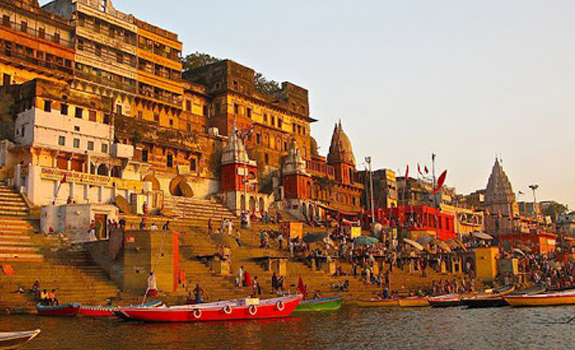
Kashi Vishvanath Temple, Kashi is one of the most famous Hindu temples and is dedicated to Lord Shiva. It is located in Varanasi, Uttar Pradesh, India.
The temple stands on the bank of the holy river Ganga, and is one of the twelve Jyotirlingas, the holiest of Shiva temples.
The temple's latest financial records peg its fixed assets at around Rs 75 crore.
The main deity is known by the name Vishvanatha or Vishveshvara meaning Ruler of The Universe. The Varanasi city is also called Kashi.The Temple has been referred to in Hindu Scriptures for a very long time and as a central part of worship in the Shaiva philosophy. During the religious occasion of Shivratri, Kashi Naresh (King of Kashi) is the chief officiating priest and no other person or priest is allowed to enter the temple sanctorum. It is only after he performs his religious functions that others are allowed to enter.
7.Guruvayurappan Temple, Kerala
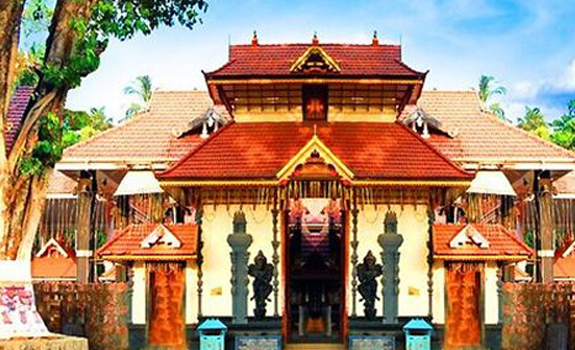
Dedicated to Lord Krishna, the temple of Guruvayurappan is known to be the Dwarka of South India. The temple is visited by nearly 6-10 million devotees annually and apparently called one of the richest temples in South India. Around 40,000 to 50,000 people visit this temple every day.
It is one of the most important places of worship for Hindus of Kerala and is often referred to as "Bhuloka Vaikunta".
The temple possesses land of around 230 acres. Guruvayur Devaswom Board has a corpus of around Rs 400 crore with Rs.2.5 crores Hundi collection per month.
Non-Hindus are not allowed in the temple.There is a story about the emergence of Guruvayoor Temple in Narada Purana.
God Krishna in Guruvayoor is popularly called Sri Guruvayoorappan. Appan means God or father so the title means the God of Guruvayoor.
8.Mahalaxmi Temple in Kolhapur, Maharashtra
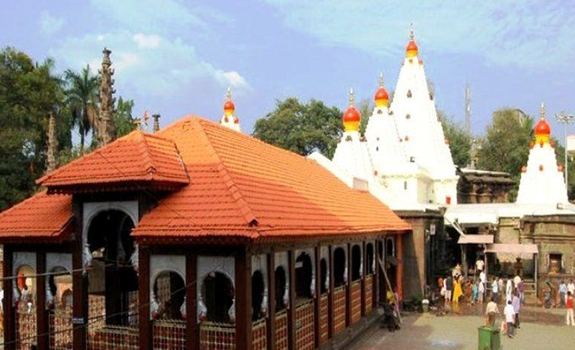
It is one of the Shakti Peethas listed in various puranas of Hinduism. According to these writings, a Shakti Peetha is a place associated with Shakti, the goddess of power. The Kolhapur Shakti Peetha is of special religious significance being one of the six places where it is believed that one can either obtain salvation from desires or have them fulfilled.
The temple belongs architecturally to the Chalukya empire and was first built in the 7th century. Mounted on a stone platform, the image of the four armed and crowned goddess is made of gemstone and weighs about 40 kilograms. The image of Mahalakshmi carved in black stone is 3 feet in height. The Shri Yantra is carved on one of the walls in the temple. A stone lion, the vahana of the goddess, stands behind the statue.
Worship Structure: Five worship services are offered each day. The first one is at 5 am, and it involves the waking of the deity with a Kakada - torch, to the accompaniment of hymns. The second worship service at 8 am involves the offering of the Shodashopachara pooja consisting of 16 elements. The afternoon and evening services and the Shejaarati pooja constitute the three other services.
Special Event - A festival image of the deity is taken out in procession around the temple courtyard each Friday, and on full moon days. According to a report the total income of this temple came to 70 crores.
9.Sri Raghavendra Swamy Mutt, Mantralayam
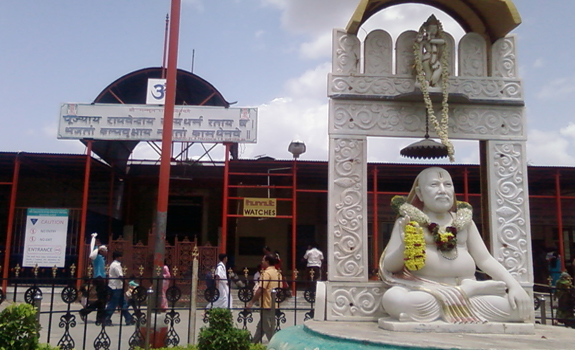
Sri Raghavendratheertha was born as Venkatanatha in the town of Bhuvanagiri in Tamil Nadu. Venkatanatha studied under Sudheendra Theertha. He quickly emerged as a talented scholar and consistently won debates over scholars older than him.
He was named as Parimalacharya after he wrote the vedic script Sudha Parimala.
He took sannyasa and adopted the name Raghavendra Theertha and in 1621.
In 1671, after assuring his disciples in a speech that he will be in spirit (in TEJOROOPA) with them for the next seven hundred years, Raghavendra attained JeevaSamadhi at Mantralayam.
It is also called as Manchale. This town is noted for the holy presence of the Vrindavana (sacred burial) of Guru Raghavendra Swami, a Madhwa saint and follower of Sri Madhwacharya.
It is believed that Guru Raghavendra Swami will be in the Vrindavana alive for 700 years and blessing the devotees. Raghavendra swamiji has solved and being solved many critical and problems of the people.
Manchalamma is the presiding deity of the Manchale village and one has to offer prayers to Manchalamma first, before they enter Sri Raghavendra Swamiji's mutt.
Raghavendra Swamy entered alive into Jeeva Samadhi (tomb), also called Brundavana. The Guru attained Samadhi in 1671 AD. The main shrine is situated in a large building inside the temple.
The Saint still exists in his holy form after he had relinquished the material world and that he will continue in this form till the completion of 700 years from the time he attained 'Jeeva Samadhi'.
While male devotees have to wear dhoti and female devotees have to wear Sarees or other traditional cloths.
There are 4 chariots in the temple coated with precious gems, silver, sandalwood and gold. The idol of the saint is carried on the chariot around the temple every day.
According to a report the total income of this temple is around 70 crores and above.
10.Tirumala Tirupati Venkateswara Temple, Andhra Pradesh
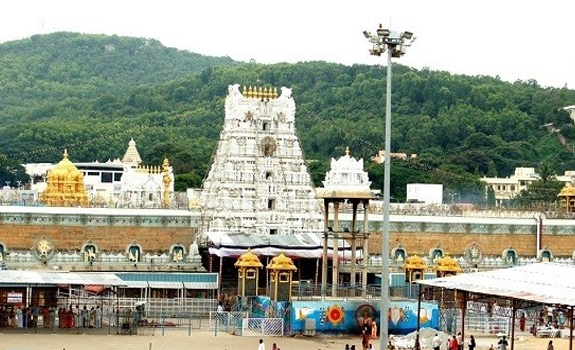
It is a landmark vaishnavite temple situated in the hill town of Tirumala at Tirupati in Chittoor district of Andhra Pradesh, India. The Temple is dedicated to Lord Venkateswara, an incarnation of Vishnu, who is believed to have appeared here to save mankind from trials and troubles of Kali Yuga. Hence, the place has also got the name Kaliyuga Vaikuntham and Lord here is referred to as Kaliyuga 'Prathyaksha Daivam'.
The Tirumala Hills are part of Seshachalam Hills range. The Hills comprises seven peaks, representing the seven heads of Adisesha. The seven peaks are called Seshadri, Neeladri, Garudadri, Anjanadri, Vrushabhadri, Narayanadri and Venkatadri.
The temple is also referred to as "Temple of Seven Hills".
The Temple is constructed in Dravidian architecture and is believed to be constructed over a period of time starting from 300 AD. The Garbagriha(Sanctum Sanctorum) is called 'AnandaNilayam'.
It is the richest temple in the world in terms of donations received and wealth. The temple is visited by about 50,000 to 100,000 pilgrims daily (30 to 40 million people annually on average), while on special occasions and festivals, like the annual Brahmotsavam, the number of pilgrims shoots up to 500,000, making it the most-visited holy place in the world.
The Pallava dynasty of Kanchipuram (9th century), the Chola dynasty of Thanjavur (10th century), and Vijayanagara pradhans (14th and 15th centuries) were committed devotees of Lord Venkateswara.
Vijayanagara Emperor Krishnadevaraya, on one of his many visits to the temple, donated gold and jewels, enabling the Ananda Nilayam (inner shrine) roofing to be gilded.
The annual income of TTD is around 900 crores and above.
Their sacred entities and their affluent architecture have earned them unparalleled fame. However, many temples had to undergo renovation with the help of the donations made by devotees.
The devotees have donated sacks of gold, silver and diamonds, which have later become the possessions of temple trusts. Here is a glimpse of the temples which earn in crores every year.
1.Padmanabhaswamy Temple, Kerala
Padmanabhaswamy Temple is credited with the title 'The richest Temple in India' and in the world as well. This temple is situated in the heart of Thiruvananthapuram, Kerala and has created history with its vast and enormous wealth that was retrieved from this temple recently.
It is accepted that Parasurama blessed the symbol of Sree Padmanabha in Dwapara Yuga. Parasurama endowed 'Kshethra karyam' (Administration of the Temple) with seven Potti families â Koopakkara Potti, Vanchiyoor Athiyara Potti, Kollur Athiyara Potti, Muttavila Potti, Karuva Potti, Neythasseri Potti and Sreekaryathu Potti. Ruler Adithya Vikrama of Vanchi (Venad) was coordinated by Parasurama to do 'Paripalanam' (Protection) of the Temple. Parasurama gave the Tantram of the Temple to Tharananallur Namboothiripad. This legend is described in detail in 'Kerala Mahathmyam' which structures some portion of 'Brahmanda Puranam'.
This temple shot to fame on 7th July 2011, after the assests were discovered from 5 secret cellars of the temple where treasure worth more than Rs. 1,00,000 crore was found, that's around US$22.3 billion in total, without even calculating the antique value of the objects. With this Padmanabhaswamy Temple became the richest temple beating the likes of the Tirupati Balaji temple that was till now touted to be the richest.
Several extant Hindu Texts like the Brahma Purana, Matsya Purana, Varaha Purana, Skanda Purana, Padma Purana, Vayu Purana, Bhagavata Purana and the Mahabharata mention this shrine. The later works of Ninth Century poet-saints refer to the Temple and even the city as having walls of pure gold. At some places, both the Temple and the entire city are often eulogized even as being made of gold, and the 'Temple as Heaven'.
Interesting Fact:The treasure that was found
Antique gold ornaments:
-Sack full of Diamonds
-Golden idol of Mahavishnu worth Rs. 500 Crore
-Golden Crowns
-Golden Bow
-17 kg of gold coins(dating back to the East India Company period)
-Gold in shape of rice trinkets(Weighing one tone! )
-18 feet long golden necklace weighing 2.5 kg
-Thousands of pieces of antique jewellery studded with diamonds and emeralds
-Golden Vessels
2.Shirdi Saibaba Shrine, Mumbai
Sai Baba of Shirdi, also known as Shirdi Sai Baba, was an Indian spiritual master who was regarded by his devotees as a saint, fakir, and satguru, according to their individual beliefs.
He was revered by both his Hindu and Muslim devotees, and during, as well as after, his life it remained uncertain if he was a Hindu or a Muslim. This, however, was of no consequence to Sai Baba. He stressed the importance of surrender to the true Satguru or Murshid, who, having gone the path to divine consciousness.
Sai Baba is worshipped by people around the world. He had no love for perishable things and his sole concern was self-realization. He taught a moral code of love, forgiveness, Social activities, inner peace, and devotion to God and guru.
One of his well-known epigrams, "Sabka Malik Ek" ("One God governs all"), is associated with Hinduism, Islam.
According to the book Sai Satcharita, Sai Baba arrived at the village of Shirdi in the Ahmednagar District of Maharashtra, British India, when he was about 16 years old. He led an ascetic life, sitting motionless under a neem tree and meditating while sitting in an asana.
Numerous monuments and statues depicting Sai Baba, which serve a religious function, have been made. One of them, made of marble by a sculptor named Balaji Vasant Talim, is in the Samadhi Mandir in Shirdi where Sai Baba was buried.
The temple has gold and silver jewellery worth approximately Rs 32 crore and silver coins worth more than Rs 6 lakh. The temple gets donations worth Rs 200 crore every year.
3.Vaishno Devi Temple, Jammu
Vaishno Devi, also known as Mata Rani, Trikuta and Vaishnavi, is the incarnation of Goddess Mahalakshmi. The words "maa" and "mata" are commonly used in India for "mother", and thus are often used in connection with Vaishno Devi.
The Holy Cave of the Mother is situated at an altitude of 5200 ft.These Darshans are in the shape of three natural rock formations called the Pindies. There are no statues or idols inside the Cave.
Vaishno Devi Temple is a Hindu temple dedicated to the Hindu Goddess, located at the Trikuta Mountains within the Indian state of Jammu and Kashmir. More than 10 million pilgrims visit this shrine every year.
It is believed that at some point of time each one of these 33 koti (type) deities have worshipped Goddess Vaishno Mata, and left their symbolic marks inside.
The Annual income at Vaishno devi temple is 500 crores.
4.Siddhivinayak Temple, Mumbai
Shree Ganesh is the first to be worshipped before beginning any new venture as he is the destroyer of obstacles (Vighnaharta). This is Shree Siddhivinayak Ganapati Temple at Prabhadevi in Mumbai, a two-century-old Temple that fulfills the desires of the worshipers.
The city of Mumbai is a mute witness to places of worship & historical interest, which are not only popular but also of archaeological importance.
The most popular & significant places of worship are the Shree Siddhivinayak Ganapati Mandir situated at Prabhadevi. This temple was first consecrated on Thursday 19th November 1801, a fact that is noted in
government records.
The outstanding feature of this deity is the tilt of the trunk to the right side. The idol has four hands (Chaturbhuj), which contains a lotus in upper right, a small axe in upper left, holy beads in the lower right and a bowl full of Modaks (a delicacy which is a perennial favorite with Shree Siddhivinayak).
Flanking the deity on both sides are Riddhi & Siddhi, goddesses signifying sanctity, fulfillment, prosperity and riches. The forehead of the deity there is an eye, which resembles the third eye of Lord Shiva. The temple gets the donation around 100 crores per Annum.
5.Golden Temple, Amritsar
The most famous religious centre of the Sikh Community, Golden Temple attracts globetrotters for its arresting golden colour and exclusive architectural beauty. This charismatic golden shrine is adorned with golden and silver detailing and looks imposing at night for its strikingly illuminated golden dome.
A blend of Indo-Islamic and Indo-European touch lends the temple a divine aura.
The canopy of the temple is made of gold. The holy book Guru Granth Sahib is kept is studded with precious diamonds and bright stones. It is estimated that on an average around 40,000 visitors throng here in Golden Temple every day.
The construction of Harmandir Sahib was intended to build a place of worship for men and women from all walks of life and all religions to come and worship God equally.
The present-day gurdwara was rebuilt in 1764 by Jassa Singh Ahluwalia with the help of other Sikh Misls. In the early nineteenth century, Maharaja Ranjit Singh secured the Punjab region from outside attack and covered the upper floors of the gurdwara with gold.
The annual income of Golden Temple of Amritsar is around 50 crores
6.Kashi Vishwanath Temple, Varanasi
Kashi Vishvanath Temple, Kashi is one of the most famous Hindu temples and is dedicated to Lord Shiva. It is located in Varanasi, Uttar Pradesh, India.
The temple stands on the bank of the holy river Ganga, and is one of the twelve Jyotirlingas, the holiest of Shiva temples.
The temple's latest financial records peg its fixed assets at around Rs 75 crore.
The main deity is known by the name Vishvanatha or Vishveshvara meaning Ruler of The Universe. The Varanasi city is also called Kashi.The Temple has been referred to in Hindu Scriptures for a very long time and as a central part of worship in the Shaiva philosophy. During the religious occasion of Shivratri, Kashi Naresh (King of Kashi) is the chief officiating priest and no other person or priest is allowed to enter the temple sanctorum. It is only after he performs his religious functions that others are allowed to enter.
7.Guruvayurappan Temple, Kerala
Dedicated to Lord Krishna, the temple of Guruvayurappan is known to be the Dwarka of South India. The temple is visited by nearly 6-10 million devotees annually and apparently called one of the richest temples in South India. Around 40,000 to 50,000 people visit this temple every day.
It is one of the most important places of worship for Hindus of Kerala and is often referred to as "Bhuloka Vaikunta".
The temple possesses land of around 230 acres. Guruvayur Devaswom Board has a corpus of around Rs 400 crore with Rs.2.5 crores Hundi collection per month.
Non-Hindus are not allowed in the temple.There is a story about the emergence of Guruvayoor Temple in Narada Purana.
God Krishna in Guruvayoor is popularly called Sri Guruvayoorappan. Appan means God or father so the title means the God of Guruvayoor.
8.Mahalaxmi Temple in Kolhapur, Maharashtra
It is one of the Shakti Peethas listed in various puranas of Hinduism. According to these writings, a Shakti Peetha is a place associated with Shakti, the goddess of power. The Kolhapur Shakti Peetha is of special religious significance being one of the six places where it is believed that one can either obtain salvation from desires or have them fulfilled.
The temple belongs architecturally to the Chalukya empire and was first built in the 7th century. Mounted on a stone platform, the image of the four armed and crowned goddess is made of gemstone and weighs about 40 kilograms. The image of Mahalakshmi carved in black stone is 3 feet in height. The Shri Yantra is carved on one of the walls in the temple. A stone lion, the vahana of the goddess, stands behind the statue.
Worship Structure: Five worship services are offered each day. The first one is at 5 am, and it involves the waking of the deity with a Kakada - torch, to the accompaniment of hymns. The second worship service at 8 am involves the offering of the Shodashopachara pooja consisting of 16 elements. The afternoon and evening services and the Shejaarati pooja constitute the three other services.
Special Event - A festival image of the deity is taken out in procession around the temple courtyard each Friday, and on full moon days. According to a report the total income of this temple came to 70 crores.
9.Sri Raghavendra Swamy Mutt, Mantralayam
Sri Raghavendratheertha was born as Venkatanatha in the town of Bhuvanagiri in Tamil Nadu. Venkatanatha studied under Sudheendra Theertha. He quickly emerged as a talented scholar and consistently won debates over scholars older than him.
He was named as Parimalacharya after he wrote the vedic script Sudha Parimala.
He took sannyasa and adopted the name Raghavendra Theertha and in 1621.
In 1671, after assuring his disciples in a speech that he will be in spirit (in TEJOROOPA) with them for the next seven hundred years, Raghavendra attained JeevaSamadhi at Mantralayam.
It is also called as Manchale. This town is noted for the holy presence of the Vrindavana (sacred burial) of Guru Raghavendra Swami, a Madhwa saint and follower of Sri Madhwacharya.
It is believed that Guru Raghavendra Swami will be in the Vrindavana alive for 700 years and blessing the devotees. Raghavendra swamiji has solved and being solved many critical and problems of the people.
Manchalamma is the presiding deity of the Manchale village and one has to offer prayers to Manchalamma first, before they enter Sri Raghavendra Swamiji's mutt.
Raghavendra Swamy entered alive into Jeeva Samadhi (tomb), also called Brundavana. The Guru attained Samadhi in 1671 AD. The main shrine is situated in a large building inside the temple.
The Saint still exists in his holy form after he had relinquished the material world and that he will continue in this form till the completion of 700 years from the time he attained 'Jeeva Samadhi'.
While male devotees have to wear dhoti and female devotees have to wear Sarees or other traditional cloths.
There are 4 chariots in the temple coated with precious gems, silver, sandalwood and gold. The idol of the saint is carried on the chariot around the temple every day.
According to a report the total income of this temple is around 70 crores and above.
10.Tirumala Tirupati Venkateswara Temple, Andhra Pradesh
It is a landmark vaishnavite temple situated in the hill town of Tirumala at Tirupati in Chittoor district of Andhra Pradesh, India. The Temple is dedicated to Lord Venkateswara, an incarnation of Vishnu, who is believed to have appeared here to save mankind from trials and troubles of Kali Yuga. Hence, the place has also got the name Kaliyuga Vaikuntham and Lord here is referred to as Kaliyuga 'Prathyaksha Daivam'.
The Tirumala Hills are part of Seshachalam Hills range. The Hills comprises seven peaks, representing the seven heads of Adisesha. The seven peaks are called Seshadri, Neeladri, Garudadri, Anjanadri, Vrushabhadri, Narayanadri and Venkatadri.
The temple is also referred to as "Temple of Seven Hills".
The Temple is constructed in Dravidian architecture and is believed to be constructed over a period of time starting from 300 AD. The Garbagriha(Sanctum Sanctorum) is called 'AnandaNilayam'.
It is the richest temple in the world in terms of donations received and wealth. The temple is visited by about 50,000 to 100,000 pilgrims daily (30 to 40 million people annually on average), while on special occasions and festivals, like the annual Brahmotsavam, the number of pilgrims shoots up to 500,000, making it the most-visited holy place in the world.
The Pallava dynasty of Kanchipuram (9th century), the Chola dynasty of Thanjavur (10th century), and Vijayanagara pradhans (14th and 15th centuries) were committed devotees of Lord Venkateswara.
Vijayanagara Emperor Krishnadevaraya, on one of his many visits to the temple, donated gold and jewels, enabling the Ananda Nilayam (inner shrine) roofing to be gilded.
The annual income of TTD is around 900 crores and above.
Reader's comments(1)
1: Nice Article, Anantha Padmanabha temple is a richest temple of the world, want to visit.
Posted by: Vikram - 01 Aug, 2022